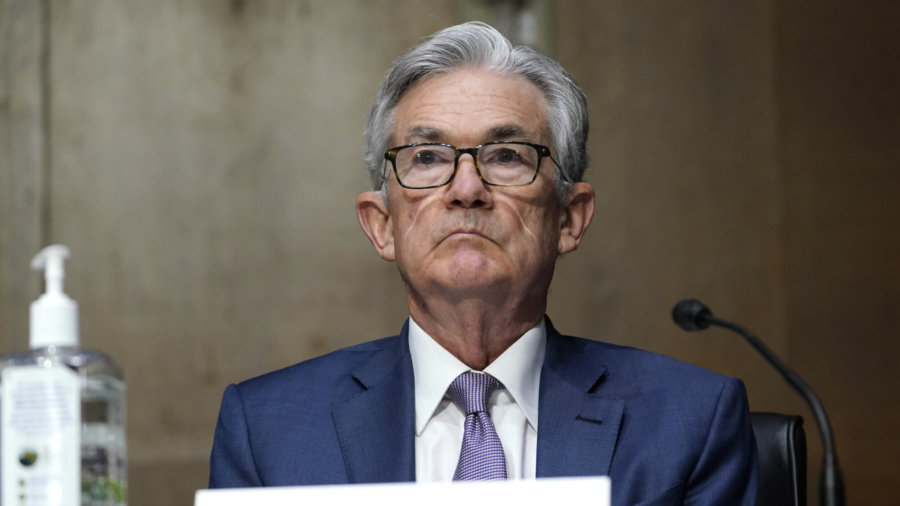WASHINGTON—The Federal Reserve on Wednesday brought forward its projections for the first post-pandemic interest rate hikes into 2023 and opened the debate on when and how it may be appropriate to start tapering the U.S. central bank’s massive bond-buying program.
The Fed’s latest policy statement also dropped a longstanding reference to the pandemic being a drag on economic growth.
Fed Chair Jerome Powell, speaking to reporters after the end of a two-day policy meeting, said officials started “talking about” tapering the central bank’s $120 billion in monthly asset purchases, which officials said would continue until “substantial further progress” has been made toward the central bank’s maximum employment and 2 percent inflation goals.
“In coming meetings, the committee will continue to assess the economy’s progress toward our goals,” Powell said, referring to the policy-setting Federal Open Market Committee.
He declined to offer guidance on the timing for any future policy shift, emphasizing that more economic progress is needed before the “substantial further progress” standard is met.
Powell also made it clear the central bank would communicate with markets and the public before making a policy shift. “We will provide advance notice before announcing any decision to make changes to our purchases,” he said.

Economic Projections
New projections saw a majority of 11 of 18 Fed officials pencil in at least two quarter-percentage-point rate increases for 2023, even as officials pledged in a statement to keep policy supportive for now to encourage an ongoing jobs recovery.
That rate-hike view, coupled with a new forecast for three years of inflation running above the 2 percent target, suggests concerns about overheating have risen sharply inside the Fed’s policy-setting committee.
“Progress on vaccinations has reduced the spread of COVID-19 in the United States” the Fed said in its statement, a substantial shift for an institution that has conditioned policy for the past 14 months on battling the pandemic.
The new language does not mean a change in policy is imminent: The Fed on Wednesday held its benchmark short-term interest rate near zero and said it will continue to buy $80 billion in Treasury securities and $40 billion in mortgage-backed securities each month to fuel the economic recovery.
But new economic and interest rate projections appeared to add some urgency to the Fed’s planning. Policymakers at the median now see the first rate increase coming in 2023 instead of 2024.
The projections showed the outlook for inflation jumping this year, though the price increases were still described as “transitory.” Overall economic growth is expected to hit 7 percent in 2021.
Together, the projections were indicative of a recovery moving faster than anticipated, and justifying discussions about the next phase of policy for the Fed.
U.S. stocks dropped after the release of the statement and the new economic projections before paring losses, with the S&P 500 index last down 0.3 percent. The yield on the benchmark 10-year U.S. Treasury note rose to 1.57 percent from 1.49 percent before the release.
The economy remains about 7.5 million jobs short of where it stood at the onset of the pandemic in February, 2020. Fed officials still describe that level as “far” from their goal of restoring maximum employment.
But, increasingly, they have also attributed the employment shortfall more to logistical issues around workers returning to jobs, factors which the Fed cannot easily change, than the strength of the economy. On the matters it can influence—the overall demand for goods and services, and the need for workers to provide them—the Fed feels it is closer to its goal.
There was roughly one job opening for every unemployed person as of May.
By Howard Schneider, Ann Saphir and Jonnelle Marte

